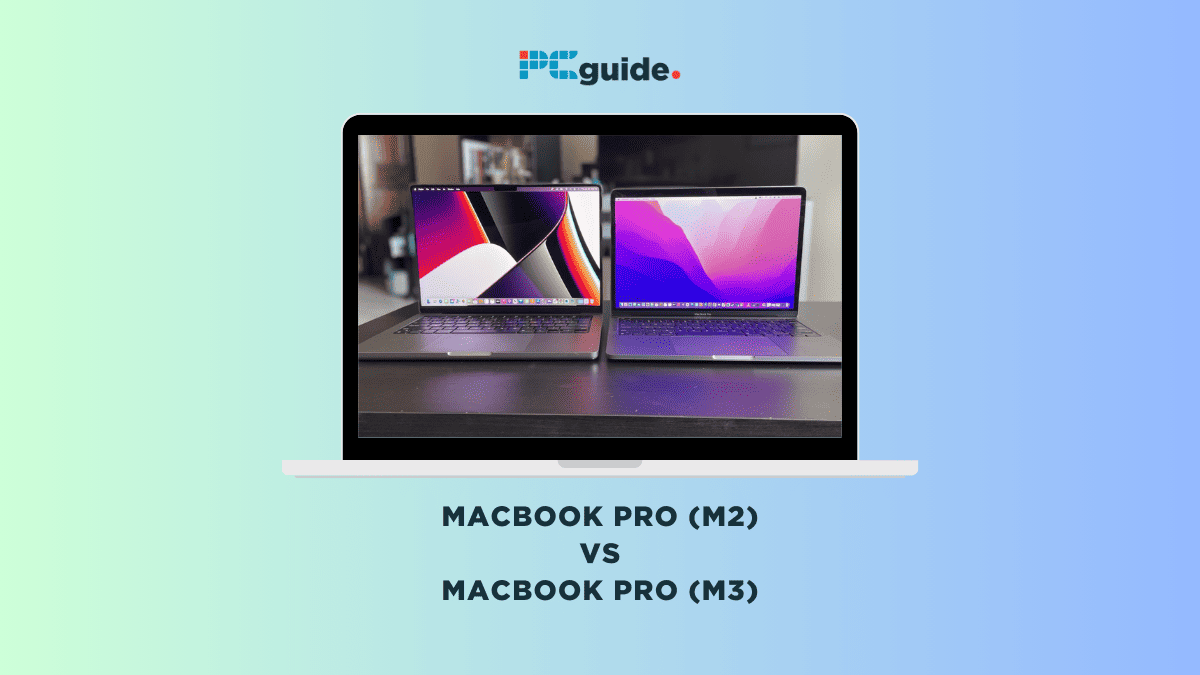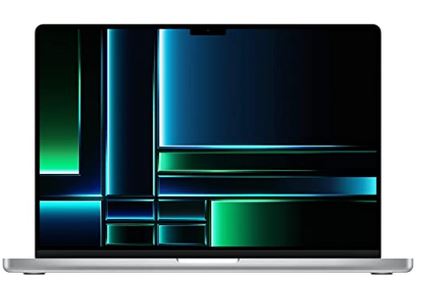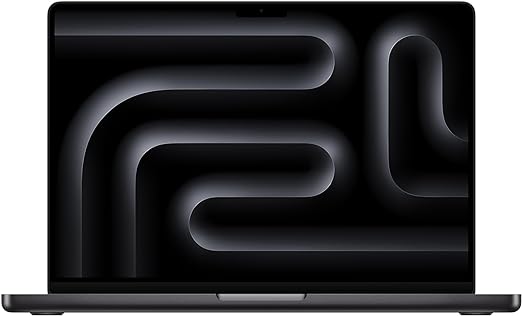MacBook Pro (M2) vs MacBook Pro (M3) – What is the difference?

Table of Contents
In this comparative review, we aim to illuminate the distinctions between the MacBook Pro (M2) vs MacBook Pro (M3). At the forefront of these variations is the integral component that delineates their capabilities – the chipset. Both models, while exemplary in their design and functionality, harbor unique attributes that manifest through their respective processors, the M2, and the M3.
Our exploration will delve into the essence of what sets these models apart, providing a clear and concise evaluation based on their intrinsic and functional disparities. Armed with this information, potential users and upgraders will be empowered to make an informed decision that aligns with their specific needs and preferences.
MacBook Pro (M2) vs. MacBook Pro (M3): Specs
In the showdown of MacBook Pro (M2) vs. MacBook Pro (M3), discerning users are keen to understand the distinctions that set these powerhouse laptops apart.
With an eye on the future, the M3 variant is a marvel of innovation, leveraging the industry’s cutting-edge 3nm technology to amplify processing capabilities significantly. This leap manifests in both performance cores and efficiency cores, delivering a quantum leap in computing muscle and energy economy.
Processor and memory
The 14-inch MacBook Pro and 16-inch MacBook Pro variants each benefit from the silicon evolution, with the M3 variant accommodating up to 96GB of RAM for the most intensive tasks. From multitasking to memory-intensive applications, the M3 stands poised to cater to every user’s needs, from the everyday to the extraordinary.
Graphics
On the graphics front, the M2’s commendable 19-core GPU configuration pales in comparison to the M3’s advancements. With a 40-core GPU option, hardware-accelerated ray tracing, and dynamic caching, the M3 is engineered to handle HDR content and complex visual tasks with unprecedented finesse.
Display and camera
Both models boast the Liquid Retina XDR screen, known for its color accuracy and ProMotion support. However, despite housing a Full-HD webcam, neither supports Face ID nor the Centre Stage technology found in iPads.
Connectivity and ports
Connectivity takes a stride forward with the M3, embracing Thunderbolt ports and the revolutionary MagSafe, coupled with the latest Wi-Fi 6E standards for seamless wireless experiences.
High-speed data transfer and flexible docking options become the norm with USB-C ports, while storage options on both models cater to the voracious demands of contemporary computing.
Audio and battery life
Both models feature a six-speaker setup with Spatial Audio support, promising immersive sound.
Remarkable battery life is achievable on both machines, with up to 22 hours of usage, ensuring prolonged periods of uninterrupted performance.
As we juxtapose the MacBook Pro (M2) against the MacBook Pro (M3), it is evident that while the M2 is an exemplar of modern computing, the M3 heralds a new era of Apple Silicon.
Whether it's the 8-core CPU catering to casual users or the robust 16-core CPU designed for professionals, the choice between these two titans boils down to one’s unique needs and the lure of future-proofing one's technological toolkit.
MacBook Pro (M2) vs. MacBook Pro (M3): Performance
In the technological face-off between the MacBook Pro (M2) and MacBook Pro (M3), the distinctions in performance are not just incremental but transformative. As Apple continues to push the boundaries of its silicon capabilities, the M3 series emerges as a beacon of computational excellence, setting a new standard for laptops. The M3 chips, with their standard, Pro, and Max variants, are a testament to a future where performance meets the demands of the most intensive tasks with ease.
The M3 Max chip, in particular, with its robust 10-core CPU and a GPU that can scale up to 32 cores, provides a significant uplift in both single-core and multi-core scores. This leap in processing power is complemented by the new media engine, which offers unparalleled efficiency for media-heavy workflows, making it an ideal choice for professionals in video production, music creation, and beyond.
Dynamic caching
Dynamic caching, introduced with the M3 series, revolutionizes how the GPU utilizes memory, optimizing real-time allocation to enhance performance across all tasks. This is particularly evident in environments that demand high-fidelity graphics, such as advanced gaming setups or professional creative suites, which benefit from the high-fidelity six-speaker sound system and support for Dolby Atmos, ensuring an immersive auditory experience.
Connectivity also sees an upgrade with the inclusion of an HDMI port, bolstering the M3's arsenal for a comprehensive and versatile setup. And, when it comes to audio, the force-cancelling woofers ensure a sound experience that matches the visual and performance prowess of these machines.
The Mac Studio, while not a MacBook, is worth mentioning as it represents the pinnacle of what the M3 Max chip can offer, providing a glimpse into the potential of these processors in a desktop format.
Ultimately, the MacBook Pro (M2) vs. MacBook Pro (M3) debate hinges on the user's need for cutting-edge technology and performance. For those looking to stay ahead of the curve, the M3 series is the clear path forward. As we embrace these advancements, the M3 series stands ready to redefine productivity, creativity, and gaming, reaffirming Apple’s legacy of innovation.
MacBook Pro (M2) vs. MacBook Pro (M3): Price
In the premium landscape where the MacBook Pro models reside, pricing is a crucial aspect of the purchasing decision. The MacBook Pro equipped with the M2 chip was originally priced at $1999 for the 14-inch model and $2499 for the 16-inch variant. With the passage of time and the introduction of newer models, the M2 versions have seen a decrease in their retail prices, becoming available at various discounts through different retailers.
In a refreshing turn, the latest MacBook Pro featuring the M3 chips presents a competitive pricing structure. The base model with the standard M3 configuration is available starting at $1599. For those seeking enhanced performance, the M3 Pro starts at $1999, while the pinnacle, the M3 Max, is available starting from $2499.
MacBook Pro (M2) vs. MacBook Pro (M3): Conclusion
The MacBook Pro M3 unequivocally crowns itself as the apex of current laptop technology, reaffirming Apple's legacy of delivering powerhouse machines that redefine the boundaries of performance and efficiency.
When Apple unveils a new MacBook Pro, it inherently escalates to a prestigious position, acclaimed as the zenith of powerful computing machinery available.
For prospective buyers seeking the crème de la crème of laptops, the MacBook Pro M3 emerges as an irresistible choice. Its meticulous engineering, coupled with an array of groundbreaking features and a competitive pricing strategy, makes it not just a purchase, but an investment into a realm of unparalleled computing excellence.
The decision to choose the M3 series is a step towards embracing a technological triumph that stands unrivaled in its category.


